Rumford Prize
Founded in 1796, the Rumford Prize, awarded by the American Academy of Arts and Sciences, is one of the oldest scientific prizes in the United States. The prize recognizes contributions by scientists to the fields of heat and light. These terms are widely interpreted; awards range from discoveries in thermodynamics to improvements in the construction of steam boilers.
| Rumford Prize | |
|---|---|
 Benjamin Thompson, whose grant paid for the formation of the Rumford Prize | |
| Awarded for | Contributions to the fields of heat and light |
| Country | United States |
| Presented by | American Academy of Arts and Sciences |
| First awarded | 1839 |
| Last awarded | 2021 |
| Website | amacad.org/about/prizes |

The award was created through the endowment of US$5,000 to the Academy by Benjamin Thompson, who held the title "Count Rumford of the United Kingdom," in 1796.[1] The terms state that the award be given to "authors of discoverie's in any part of the Continent of America, or in any of the American islands." Although it was founded in 1796, the first prize was not given until 1839, as the academy could not find anyone who, in their judgement, deserved the award. The academy found the terms of the prize to be too restrictive, and in 1832 the Supreme Court of Massachusetts allowed the Academy to change some of the provisions; mainly, the award was to be given annually instead of biennially, and the Academy was allowed to award the prize as it saw fit, whereas before it had to give it yearly.[2] The first award was given to Robert Hare, for his invention of the oxy-hydrogen blowpipe, in 1839. Twenty-three years elapsed before the award was given a second time, to John Ericsson.[3]
The prize is awarded whenever the academy recognizes a significant achievement in either of the two fields. Awardees receive a gold-and-silver medal.[1] Previous prizewinners include Thomas Alva Edison, for his investigations in electric lighting; Enrico Fermi, for his studies of radiation theory and nuclear energy; and Charles H. Townes, for his development of the laser. One man, Samuel Pierpont Langley, has won both the Rumford Prize and the related Rumford Medal (the European equivalent of the Rumford Prize), both in 1886. The most recent award was given in 2021 to Charles L. Bennett for his contributions to cosmology. The prize has been given to researchers outside of the United States only twice—once to John Stanley Plaskett, from British Columbia, and once to a group of Canadian scientists "for their work in the field of long-baseline interferometry."[4]
List of recipients
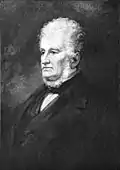

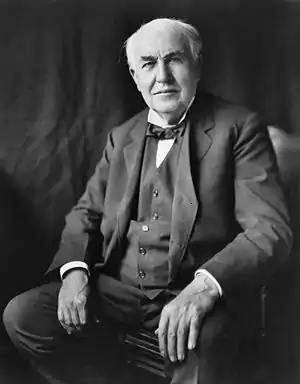
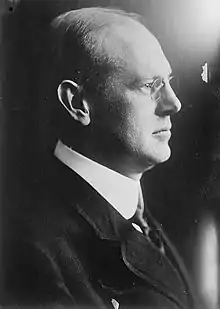
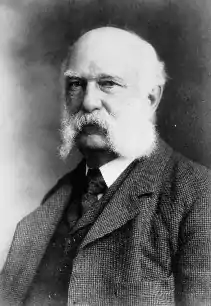




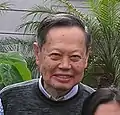
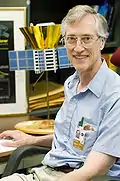


Source: American Academy of Arts and Sciences: Past Prizes
| Year | Name | Location[a] | Rationale |
|---|---|---|---|
| 1839 | Robert Hare | Philadelphia, Pennsylvania | Inventor of the oxy-hydrogen blowpipe |
| 1862 | John Ericsson | New York, New York | His work improved the field of heat management, but the award was specifically for his invention of the caloric engine of 1858. |
| 1865 | Daniel Treadwell | Cambridge, Massachusetts | Heat management. He was awarded especially for his contributions towards a "cannon of large caliber, and great strength and endurance". |
| 1866 | Alvan Clark | Cambridge, Massachusetts | Improved refracting telescopes |
| 1869 | George Henry Corliss | Providence, Rhode Island | For improving the steam engine |
| 1871 | Joseph Harrison Jr. | Philadelphia, Pennsylvania | Towards his concern for safer steam boilers |
| 1873 | Lewis Morris Rutherfurd | New York, New York | For improving the "processes and methods" of astronomical photography |
| 1875 | John William Draper | New York, New York | For his work towards apprehending radiant energy |
| 1880 | Josiah Willard Gibbs | New Haven, Connecticut | Founded the field of chemical thermodynamics |
| 1883 | Henry Augustus Rowland | Baltimore, Maryland | For his research in light and heat |
| 1886 | Samuel Pierpont Langley | Allegheny, Philadelphia | For his work towards the understanding of radiant energy |
| 1888 | Albert Abraham Michelson | Cleveland, Ohio | Measured the velocity of light, and contribution towards the motion of the luminiferous ether, and absolute determination of the wavelengths of light |
| 1891 | Edward Charles Pickering | Cambridge, Massachusetts | For his work on stellar photometry and stellar spectra |
| 1895 | Thomas Alva Edison | Orange, New Jersey | For his investigations in electric lighting |
| 1898 | James Edward Keeler | Allegheny, Pennsylvania | For the applications of the spectroscope, and especially his investigations of nebulae and the physical contents of Saturn's rings |
| 1899 | Charles Francis Brush | Cleveland, Ohio | For the development of the electric arc lamp |
| 1900 | Carl Barus | Providence, Rhode Island | For his heat research |
| 1901 | Elihu Thomson | Lynn, Massachusetts | For his work in welding and lighting |
| 1902 | George Ellery Hale | Chicago, Illinois | For his investigations in solar and stellar physics and for the invention of the spectro-heliograph |
| 1904 | Ernest Fox Nichols | New York, New York | For his research on radiation, radiation pressure, stellar heat, and the infrared spectrum |
| 1907 | Edward Goodrich Acheson | Niagara Falls, New York | For the application of the electric furnace to the production of carborundum and graphite |
| 1909 | Robert Williams Wood | Baltimore, Maryland | For light-related discoveries, including the optical properties of sodium and other metallic vapors |
| 1910 | Charles Gordon Curtis | New York, New York | For his improvements to the steam turbine |
| 1911 | James Mason Crafts | Boston, Massachusetts | For his work in thermometry, and the development of new fixed points on the scale.[b] |
| 1912 | Frederic Eugene Ives | Woodcliff-on-Hudson, New Jersey | For his inventions in color photography and photoengraving |
| 1913 | Joel Stebbins | Urbana, Illinois | For the development of the selenium photometer and its application to scientific problems |
| 1914 | William David Coolidge | Schenectady, New York | For his invention of ductile tungsten |
| 1915 | Charles Greeley Abbot | Washington, D.C. | For his research in solar radiation |
| 1917 | Percy Williams Bridgman | Cambridge, Massachusetts | For his high-pressure thermodynamic breakthroughs |
| 1918 | Theodore Lyman | Cambridge, Massachusetts | Awarded for his research on short-wave and long-wave wavelengths |
| 1920 | Irving Langmuir | Schenectady, New York | "For his research in thermionic and allied phenomena" |
| 1925 | Henry Norris Russell | Princeton, New Jersey | Awarded for his research in solar radiation |
| 1926 | Arthur Holly Compton | Chicago, Illinois | Awarded for his research in Roentgen rays |
| 1928 | Edward Leamington Nichols | Ithaca, New York | "For his research in spectrophotometry" |
| 1930 | John Stanley Plaskett | Victoria, British Columbia | For his astronomical spectrographic research[c] |
| 1931 | Karl Taylor Compton | Cambridge, Massachusetts | He was awarded the medal for thermionics and spectroscopic research. |
| 1933 | Harlow Shapley | Cambridge, Massachusetts | For his work with the luminosity of stars and galaxies |
| 1937 | William Weber Coblentz | Washington, D.C. | For his improvements in the measurement of heat and light |
| 1939 | George Russell Harrison | Belmont, Massachusetts | "For pioneering improvements in spectroscopics" |
| 1941 | Vladimir Kosma Zworykin | Princeton, New Jersey | Awarded for the creation of the iconoscope and other related devices |
| 1943 | Charles Edward Mees | Rochester, New York | For his contributions to photography |
| 1945 | Edwin Herbert Land | Cambridge, Massachusetts | For his inventions related to the application of polarized light |
| 1947 | Edmund Newton Harvey | Princeton, New Jersey | For his research in bioluminescence |
| 1949 | Ira Sprague Bowen | Pasadena, California | For his work on the identification of nebulium and for other outstanding works |
| 1951 | Herbert E. Ives | Montclair, New Jersey | For his research in the field of optics |
| 1953 | Enrico Fermi | Chicago, Illinois | For his investigations in electromagnetic radiation and nuclear energy |
| 1953 | Willis E. Lamb Jr. | Stanford, California | Awarded for studying the hydrogen spectrum |
| 1953 | Lars Onsager | New Haven, Connecticut | For his investigations in thermodynamics related to transportation |
| 1955 | James Franck | Chicago, Illinois | For his studies in the investigation of photosynthesis |
| 1957 | Subrahmanyan Chandrasekhar | Williams Bay, Wisconsin | For his investigations of the radiative energy balance in stars |
| 1959 | George Wald | Cambridge, Massachusetts | For identifying the biochemical basis of vision |
| 1961 | Charles Hard Townes | New York, New York | "For his development of the laser" |
| 1963 | Hans Albrecht Bethe | Ithaca, New York | For pioneering studies in stellar nucleosynthesis |
| 1965 | Samuel Cornette Collins | Cambridge, Massachusetts | For the invention of the Collins Helium Cryostat and other pioneering work |
| 1965 | William David McElroy | Baltimore, Maryland | For his work on the molecular origin of bioluminescence |
| 1967 | Robert Henry Dicke | Princeton, New Jersey | "For his contributions to microwave radiometry and to the understanding of atomic structure" |
| 1967 | Cornelius B. Van Niel | Stanford, California | For his contributions to the study of photosynthesis |
| 1968 | Maarten Schmidt | Pasadena, California | For his work deducing the spectra of quasi-stellar objects |
| 1971 | MIT Group (John. A Ball, Alan H. Barrett, Bernard F. Burke, Joseph C. Carter, Patricia P. Crowther, James M. Moran Jr., Alan E. E. Rogers)
Canadian Group (Norman W. Broten, R. M. Chisholm, John A. Galt, Herbert P. Gush, Thomas H. Legg, Jack L. Locke, Charles W. McLeish, Roger S. Richards, Jui Lin Yen) NRAO–Cornell Group (Claude C. Bare, Barry G. Clark, Marshall H. Cohen, David L. Jauncey, Kenneth I. Kellermann) |
Massachusetts Institute of Technology (Ball, Barrett, Burke, Carter, Crowther, Moran, Rogers) National Research Council (Canada) (Broten, Legg, Locke, McLeish, Richards); Dominion Radio Astrophysical Observatory (Galt); University of Toronto (Yen); Queen's University (Chisolm); University of British Columbia (Gush)[5] National Radio Astronomy Observatory (Bare, Clark, Kellerman); Cornell University (Cohen, Jauncey)[6][7] |
"For their work in the field of long-baseline interferometry." The Rumford Committee sponsored a symposium on recent developments in the field to mark the unusual circumstances of the 1971 award;[8] it was reported in the January 14, 1972 issue of Science.[9] |
| 1973 | E. Bright Wilson | Cambridge, Massachusetts | For pioneering the importance of symmetry in polyatomic molecules and for his active work in the field of microwave spectroscopy |
| 1976 | Bruno Rossi | Cambridge, Massachusetts | For discovering the origins of cosmic radiation |
| 1980 | Gregorio Weber | Urbana, Illinois | For researching the theory of, and working on the application of, fluorescence |
| 1980 | Chen Ning Yang
|
Stony Brook, New York
|
"For development of a generalized gauge invariant field theory" |
| 1985 | Hans Georg Dehmelt
|
Seattle, Washington
|
Awarded for his work in the field of atomic spectroscopy |
| 1986 | Robert B. Leighton
|
Pasadena, California
|
For his work in developing infrared astronomy |
| 1992 | James R. Norris
|
Chicago, Illinois
|
Awarded for working towards the understanding of photosynthesis |
| 1996 | John C. Mather | Greenbelt, Maryland | For his research related to the cosmic microwave background |
| 2008 | Sidney D. Drell
|
Stanford University
|
For their efforts to reduce the global threat of nuclear weapons[10] |
| 2015 | Federico Capasso
|
Harvard John A. Paulson School of Engineering and Applied Sciences
Alcatel-Lucent Bell Laboratory |
For their contributions to the field of laser technology |
| 2019 | Ernst Bamberg
Ed Boyden Karl Deisseroth Peter Hegemann Gero Miesenböck Georg Nagel |
Max-Planck Institute of Biophysics
Massachusetts Institute of Technology Stanford University Humboldt University of Berlin University of Oxford University of Würzburg |
For "their extraordinary contributions related to the invention and refinement of optogenetics."[11] |
| 2021 | Charles L. Bennett | Baltimore, Maryland | For his contributions to the field of cosmology |
See also
References and notes
- [a] ^ In this sense, location refers to the recipient's place of work or association
- "Academy Prizes". American Academy of Arts and Sciences. 2006. Archived from the original on 2011-11-05. Retrieved 2009-06-17.
- "The Rumford Medallists of the American Academy of Arts and Sciences". Notes and Records of the Royal Society of London. The Royal Society. 8 (1): 90–94. October 1950. doi:10.1098/rsnr.1950.0004. JSTOR 3087234.
- Conant Church, William (1890). The Life of John Ericsson. Charles Scribner's Sons. pp. 217–218. Retrieved 2009-06-29.
- "Past Prizes". American Academy of Arts & Sciences. Retrieved 2019-03-12.
- "Notes—Rumford Award Made to Canadian Radio Astronomers; R.A.S.C. Award at Tenth Canada-Wide Science Fair; Fondation de la Société Astronomique du Canada". Journal of the Royal Astronomical Society of Canada. 65: 187. August 1971. Bibcode:1971JRASC..65..187.
- Kellerman, Kenneth I.; Cohen, Marshall H. (October 1988). "The origin and evolution of the N.R.A.O.-Cornell VLBI system". Journal of the Royal Astronomical Society of Canada. 82: 248–265. Bibcode:1988JRASC..82..248K.
- Dunn, Peter. "Radio Astronomer Ken Kellermann '59 Pioneered Very Long Baseline Interferometry". MIT Technology Review. Retrieved 2019-03-12.
- Rossi, Bruno B. (1970). "Report of the Rumford Committee". Records of the Academy (American Academy of Arts and Sciences) (1970/1971): 14. ISSN 0065-6844. JSTOR 3785392.
- Morrison, Philip; Rogers, Alan E. E. (1972-01-14). "Long-Baseline Interferometry". Science. 175 (4018): 218–220. Bibcode:1972Sci...175..218R. doi:10.1126/science.175.4018.218. ISSN 0036-8075. PMID 17771806.
- "Nuclear Arms Control Leaders Receive Prestigious Rumford Prize from the American Academy". 2008 Rumford Prize press release (Press release). American Academy of Arts and Sciences. 2008-10-09. Retrieved 2018-01-03.
- "Rumford Prize Awarded for the Invention and Refinement of Optogenetics". American Academy of Arts & Sciences. Retrieved 2019-03-12.